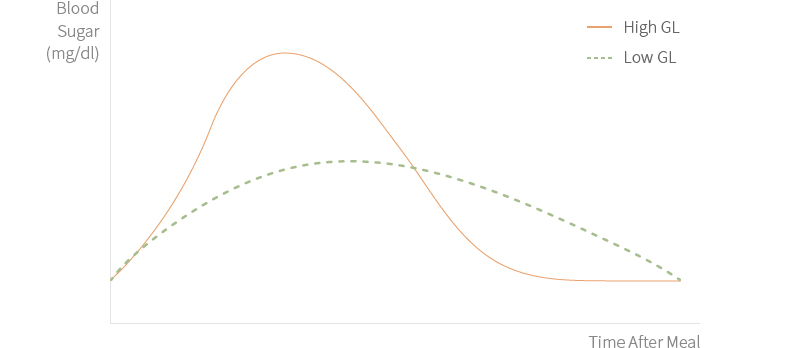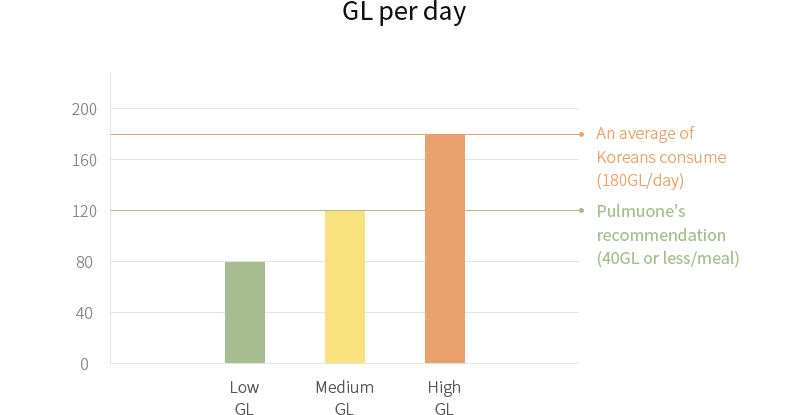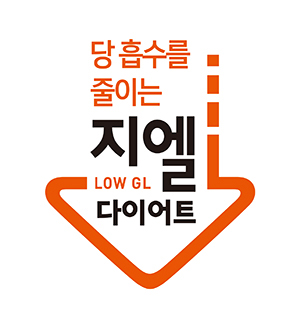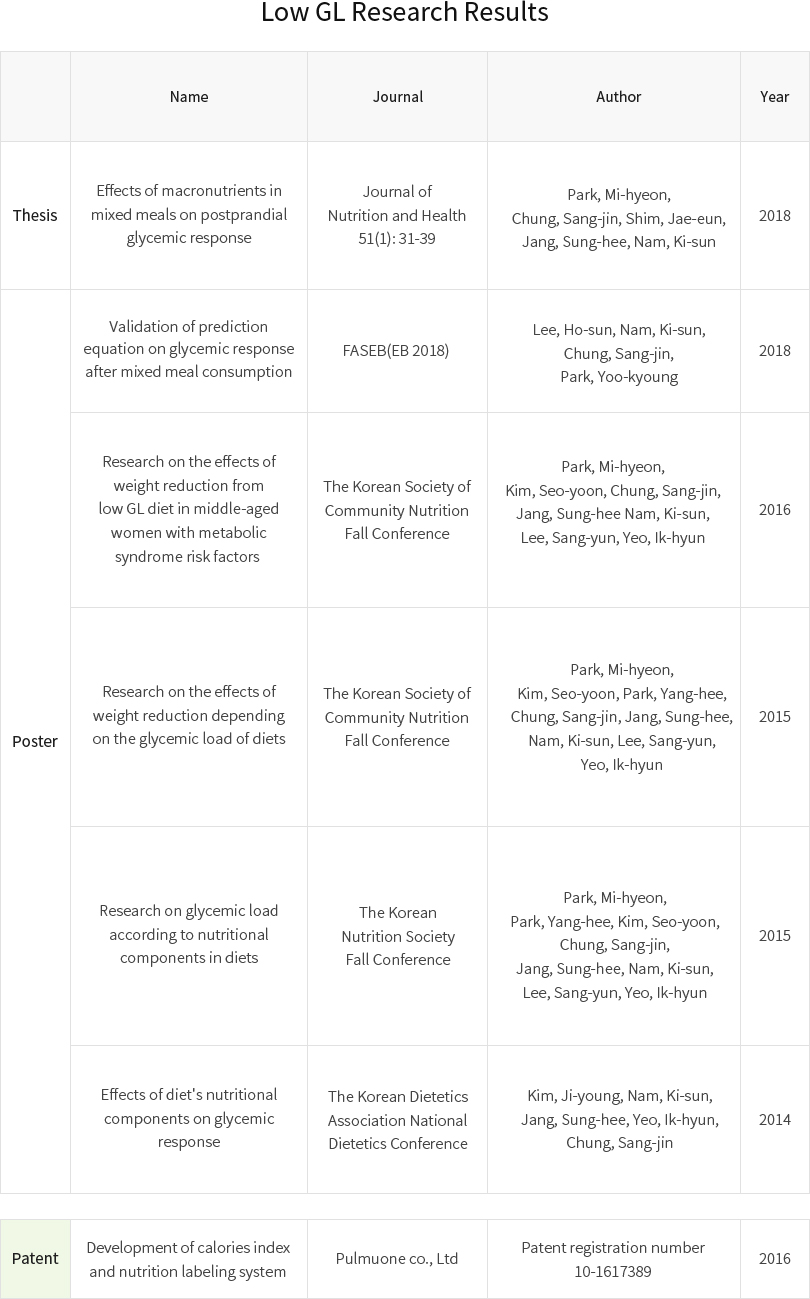Low GL Policy
Glycemic load (GL) is an estimate of how much carbohydrate from the food that was consumed is digested and absorbed to raise a person’s blood sugar level after eating.
As shown in the graph below, when GL is high, the blood sugar level goes up, creating a big increase. On the other hand, food with low GL does not increase the much. The higher the blood sugar level rises, the more the insulin is secreted, and more fat is synthesized. When a dietary lifestyle with high GL continues for a lengthy period of time, it leads to abdominal obesity and insulin resistance while boosting the likeliness of suffering from lifestyle diseases including metabolic syndrome and diabetes.


As Low GL diet does not increase the blood sugar level much, there is no need for excessive secretion of insulin, and the limited fluctuation in the blood sugar level helps manage appetite and body weight.

Generally, if GL value is 80 or below per day, it is considered low GL; if the number is 120 or higher, it is deemed a high GL diet. It has been reported that Koreans, who have a high intake of carbohydrate, have average GL value 180 or higher in a day. Thus, Pulmuone recommends “Low GL Diet,” a dietary lifestyle that lowers sugar absorption to limit GL value to 120 a day.
For people to easily practice the Low Gl Diet, Pulmuone devised the “211 Diet Regimen” Imagine a meal as a plate. Half (1/2) the plate should be filled with vegetables, while the half of the other half (1/4 of the plate) should be protein foods low on saturated fat, and the rest (1/4 of the plate) should be whole grains. This is having a meal with the proportion of each group in 2:1:1.
In order to measure food’s GL or glycemic index (GI), a certain number of people’s changes in blood sugar level after consuming a particular amount of food should be monitored. Hence, getting the estimate is quite difficult and inconvenient, so there is limited information available concerning GL or GI. This is why Pulmuone’s HNRC conducted multiple rounds of clinical trials in collaboration with external experts and developed 'GL prediction model'. It has been patented, and it continues the research to verify the model’s validity and utility.

[ The Korean Society of Community Nutrition Fall Conference (26. Oct. 2018) ]
The eGL (estimated GL) deduced from 'GL prediction model' is often confused with general GL, so the eGL has been named “Sugar Stress Score(Sugar Absorption Index)” to reduce confusion and enhance customer’s level of understanding regarding it.












